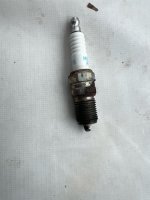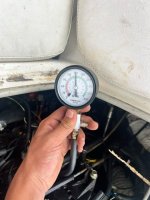Gone_walkabouts
New member
hi, everyone, new to the forum and hoping to get help working out why my Merccruiser 3.0 is not starting reliably. It stumping me and suspect there’s people that know a lot more about this stuff for me !!
The symptoms of the issue is that it will not start in the morning when it’s cooler(20 degrees C or 68 F ) however will start fine when it’s a little warmer (25 degrees C or77 F ) Once started will run all day fine and start fine until the following morning. This pattern has been repeated for over five days and I’m amazed that such little temperature difference makes a difference. It really has consistently only started when it’s got warmer.
So comfortable, the rotation speed and battery are fine. Compression is 150 psi per cylinder which is a little down but nothing too bad. The carby was rebuilt a few months ago and the engine has been starting fine until now in all conditions, including cold conditions . Pretty sure the TKS system is working as it should as I disconnected it, and it won’t start, and when I connect, it will start as long as the temperature is warm enough.
I am getting spark on all four plugs and have swapped them out to be sure. I did note that the spark coming off is orange and understand that blue is better and stronger. I am wondering whether this will make all the difference between it starting in different temperatures or whether to look somewhere else.
I guess if it’s unlikely to be the spark then then it is Carby related. Strangely, I have tried to start it using starting fluid into the car and really surprised that this does not get it to even kick if it to cold. That’s the bit of stumped me most.
Recently, we removed a spark plug to see if it was wet and flooded when it has been turned in over without starting and it didn’t seem too wet. I do wonder whether it’s running slightly too rich.
I’ve tried all combinations of pumping the throttle on start a few times etc. I have also tried not pumping the throttle. The key difference I can only find is the temperature that will determine if it will start or not. Really has me stumped and wondering if anyone has seen the same thing or has an idea on where to start troubleshooting for here
The symptoms of the issue is that it will not start in the morning when it’s cooler(20 degrees C or 68 F ) however will start fine when it’s a little warmer (25 degrees C or77 F ) Once started will run all day fine and start fine until the following morning. This pattern has been repeated for over five days and I’m amazed that such little temperature difference makes a difference. It really has consistently only started when it’s got warmer.
So comfortable, the rotation speed and battery are fine. Compression is 150 psi per cylinder which is a little down but nothing too bad. The carby was rebuilt a few months ago and the engine has been starting fine until now in all conditions, including cold conditions . Pretty sure the TKS system is working as it should as I disconnected it, and it won’t start, and when I connect, it will start as long as the temperature is warm enough.
I am getting spark on all four plugs and have swapped them out to be sure. I did note that the spark coming off is orange and understand that blue is better and stronger. I am wondering whether this will make all the difference between it starting in different temperatures or whether to look somewhere else.
I guess if it’s unlikely to be the spark then then it is Carby related. Strangely, I have tried to start it using starting fluid into the car and really surprised that this does not get it to even kick if it to cold. That’s the bit of stumped me most.
Recently, we removed a spark plug to see if it was wet and flooded when it has been turned in over without starting and it didn’t seem too wet. I do wonder whether it’s running slightly too rich.
I’ve tried all combinations of pumping the throttle on start a few times etc. I have also tried not pumping the throttle. The key difference I can only find is the temperature that will determine if it will start or not. Really has me stumped and wondering if anyone has seen the same thing or has an idea on where to start troubleshooting for here



